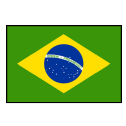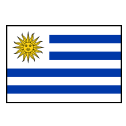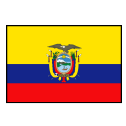The group stage of the World Cup is complete! Two of South America's sides are advancing to the knockout rounds, while two have been eliminated. Here's what went right for the two that are moving on (Argentina and Brazil) and what was wanting for the two going home (Uruguay and Ecuador).
WHAT WENT RIGHT?

Argentina
Group C finish: 1st place, 6 points (2W-0D-1L)
Knockout round opponent: vs. Australia
Probably the biggest thing that went right for Argentina was the opportunity to play Poland in the finale of Group C. Too slow to support centre-forward Robert Lewandowski and, even more importantly, too slow to block Argentina's midfield interplay, Poland were the perfect opponent for a team seeking to confirm that it had regained its mojo.
Just as had happened against Colombia four years ago, Poland were thoroughly out of their depth against a South American side proficient at moving the ball. Argentina ended up being rewarded for retaining faith in their own idea. They had been thrown off course by the extraordinary boldness of Saudi Arabia's high defensive line in the first group stage game, denying them the room to play their passing game.
And under pressure against Mexico in the second game, coach Lionel Scaloni did his team no favours by introducing Guido Rodriguez in the midfield holding role, a player without the passing skills to start the moves with the required rhythm. From the moment he was replaced by Enzo Fernandez, Argentina started looking like the side that came into the tournament on a 36-game unbeaten run.
The second goal in the win against Poland was the true essence of the Argentina side -- a 37-pass move, forcing the opposing defence to shift this way and that until space opened up for Fernandez to burst forward and supply Julian Alvarez for a superb shot into the far corner.
Argentina, then, have picked up momentum -- and another thing that might have gone right for them is the way that the draw has worked out. They will be considered favourites against Australia on Saturday, and also in a potential quarterfinal against the winners of the Netherlands or the United States.
Australia (as well as the Netherlands and the USA) possess an athletic capacity far greater than that of Poland, but the Socceroos have little time to recover from the rearguard action they heroically produced against Denmark. They can surely anticipate another 90 -- and maybe 120 -- minutes chasing after the ball, this time against an opponent with more of a cutting edge.

Brazil
Group G finish: 1st place, 6 points (2W-0D-1L)
Knockout round opponent: South Korea
A 1-0 defeat to Cameroon on an injury-time goal in Friday's Group G finale will be seen as a humiliation, and adds pressure on Monday's round-of-16 meeting with South Korea -- a second shock defeat does not bear thinking about. And the injuries are a problem -- the curse of the fullbacks and the uncertain status of Neymar.
Without the axis of Neymar and Lucas Paqueta it is proving hard to break the opposition down. But the first two matches -- before the wholesale changes for the Cameroon game -- established Brazil's credentials as serious candidates to win their sixth World Cup. They beat two good European sides, and neither Serbia nor Switzerland managed a single shot.
As Brazil coach Tite said, his team were balanced with constant aggression. It could even be that the disappointment against Cameroon helps Tite to clear his mind -- few of the players took advantage of the opportunity they had been given, making it easier to name a starting XI to start against South Korea.
WHAT WENT WRONG?

Uruguay
Group H finish: 3rd place, 4 points (1W-1D-1L)
Eliminated
In the end, what went wrong for Uruguay was going to the last game depending on other results in a group where there was so little margin for error. Ever since going out in the 2018 quarterfinals, Uruguay have been chasing the Holy Grail -- balancing the new generation with the old guard of Luis Suarez, Edinson Cavani and Diego Godin.
The balance has proved elusive, and coach Diego Alonso found himself playing a type of whack-a-mole, solving one problem only for another to emerge. Pre-tournament evidence led to the conclusion that against strong opposition Uruguay were at their best and most solid with three in midfield, making it hard to field two up front and a back four.
The solution in their first Group H game against South Korea? Play striker Darwin Nunez from the left wing, where he did not look happy. Even so, Uruguay should have won, and maybe left it too late to go for the big push. Instead, they settled for a scoreless draw.
In the second match against Portugal they managed to have three in midfield with two up front. The solution was to play a back three. The problem was that it meant taking out winger Facundo Pellistri -- and Uruguay were always better when his pace enabled the team to play higher up the pitch. Without Pellistri they were too passive. But when Alonso made attacking substitutions they probably deserved a draw -- striking the woodwork for the second game in a row -- before a highly controversial penalty sent them to a 2-0 defeat.
And so in the final game against Ghana there was no option. Uruguay had to go for broke. Alosno found a way to fix a problem which has been hanging over the team for eight years -- how to fit in playmaker Giorgian de Arrascaeta with two strikers in a 4-4-2. De Arrascaeta lacks the pace to play wide, and wants to drift in. Uruguay solved the problem with the advances down the flank of left back Matias Olivera and the willingness of the strikers to work left. It meant the team were open -- a necessary risk -- although it restricted the freedom of midfielder Federico Valverde.
It worked well enough to get a 2-0 win over Ghana and momentarily dream of a mouthwatering round-of-16 clash with Brazil. But South Korea scored a late second goal against Portugal's second stringers -- bringing to an end Uruguay's campaign and the international careers of a group of players who put the team back on the map in the 2010 World Cup.

Ecuador
Group A finish: 3rd place, 4 points (1W-1D-1L)
Eliminated
Every World Cup highlights the dangers of being able to play for a draw. Ecuador were the latest victims, losing a place in the knockout phase after a 2-1 defeat to Senegal in their last Group A game. Ecuador threw away the first half by being too passive. They marked closer to their own goal than in the previous two games, and as a result they were unable to establish the same control.
Despite playing several warmup games against African opposition, Ecuador also appeared to find it tough to adjust to facing a rival who can match and even overcome their own physical strength. And when push came to shove, an old worry proved justified; going into the tournament, the main concern was where the goals were going to come from. The team lacked a spark of creativity, especially when they did not mark high enough to win the ball close to the opposing goal.
But plenty went right for Ecuador. This is a young side that -- as long as it can find a way to replace Enner Valencia -- is only going to get better. They beat hosts Qatar in the tournament opener, and they clearly had the best of their 1-1 duel with the Netherlands, a warm memory in the coming months and a strong indication that this generation belong on the big stage.
